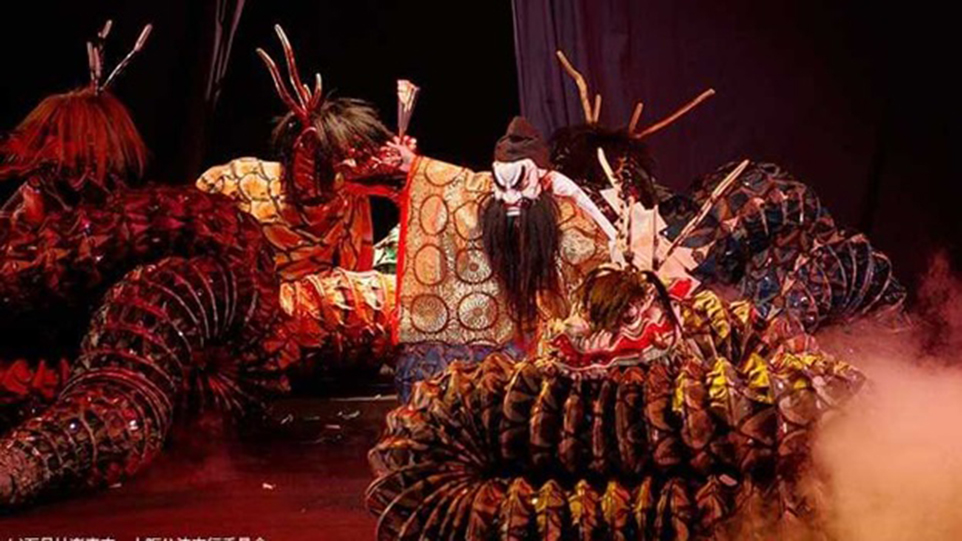
Iwami Kagura Dance Performances come to the UK!
- 27 - 29 September 2019
-
27 September 2019, 13.00: Cardiff
28 September, 15.00-16.00: British Library
29 September: Japan Matsuri -
27 September: Main Hall, National Museum Cardiff, Cathays Park, Cardiff CF10 3NP
28 September: Knowledge Centre, The British Library, 96 Euston Road, London, NW1 2DB
29 September: Japan Matsuri 2019, Trafalgar Square, London -
https://museum.wales/cardiff/whatson/10823/Iwami-Kagura-Show/
https://www.bl.uk/events/iwami-kagura-performance-by-otsu-kagura-troupe
http://www.japanmatsuri.com/?page_id=1506#main-stage - - - -
- - - -
- Tweet
We are delighted to welcome the Otsu Kagura Troupe who will perform special shows of the Iwami Kagura dance tradition in the UK. Come and join us at the places and dates below – fun for the whole family! No booking required. What is Iwami Kagura?
Kagura is a Shinto theatrical dance and music dedicated to the deities of Japanese mythology. It originated from a mythical event recorded in the Kojiki, a 1,300-year-old historical record of Japan, in which the female deity of dance and the arts dances to coax the female deity of the sun out of hiding in a cave so that her light would grace the world again. The older and ritualistic form is still performed at the Imperial Court, and the more theatrical forms are staple in local communities in regions of Japan.
Iwami Kagura is a form of kagura native to Iwami region of western Shimane Prefecture. It has about 300 years of history and is performed mostly during the annual celebrations of shrines in the autumn to dedicate it to the deities in gratitude and to pray for an abundant harvest throughout the year. The repertoire includes ritual dances and narrative plays based on myths. The magnificent dance, up-tempo music, and flamboyant costumes are captivating, and although being a traditional performing art, it continues to evolve over times.
Who are the Otsu Kagura troupe?
The troupe was founded in 1999 as the new generation to carry on the tradition of Iwami Kagura. The troupe works on preserving and developing the tradition by making new plays as well as devoting itself to preserve the classic plays to convey the appeal of the indigenous and traditional kagura. The troupe performs 41 plays and presents around 50 performances annually, performing also at many events in other cities as well as in urban areas and overseas.
The troupe also operates Mai-no-za, the first dedicated theatre for Iwami Kagura opened in April 2019, with the aims of developing new fans and making the facility as the base of promoting the kagura not only for locals but also domestic and international visitors.
In collaboration with: National Museum Cardiff, The British Libraly, Japan Matsuri
